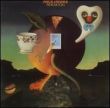DanielM says:
@GS maybe in modern day counterpoint but in first species each note of the cantus firmus sounds against one note of the counter melody so they have the same rhythm. Although species counterpoint is nowadays really just academic I do think building up a traditional knowledge of counterpoint is important for laying the foundations.
Of course first species is just the very very simplest form of counterpoint and with 2nd and onwards species counterpoint is independent of rhythm, but nevertheless it is considered counterpoint as long as you obey the rules: no parallel 3rds 5ths 6ths or octaves, contrary motion where possible and neither of the voices taking a large leap in the same direction at once. By following those rules the melodies are independent enough to be considered contrapuntal.
Of course no one would really write in strict species counterpoint unless they were trying to imitate baroque and then they wouldn't use first species so it could be argued that as it's purely academic my point is defunct.
In short I suppose there is an edge of personal opinion on whether nowadays it's valid to consider 1st species as counterpoint
I agree, it is a matter of opinion, albeit not personal. As I understand it,
species counterpoint is one thing- that also happens to be, as you say, academic; while
counterpoint is another, that is more practicle than acdemic. Your mention of 1st, 2nd... species counterpoint further renforces that point.
I'm not an expert, but logic would dictate, and this bit just as an add on to GS2112's topic starter (not aimed at a particular point of reference), that species counterpoint, whether it came first or second, nowadays, is simply a rational breakdown of counterpoint. Case in point: Chords and harmonies.
On another note, I'm glad to see some new and resfreshing conversation!
Rock on!






